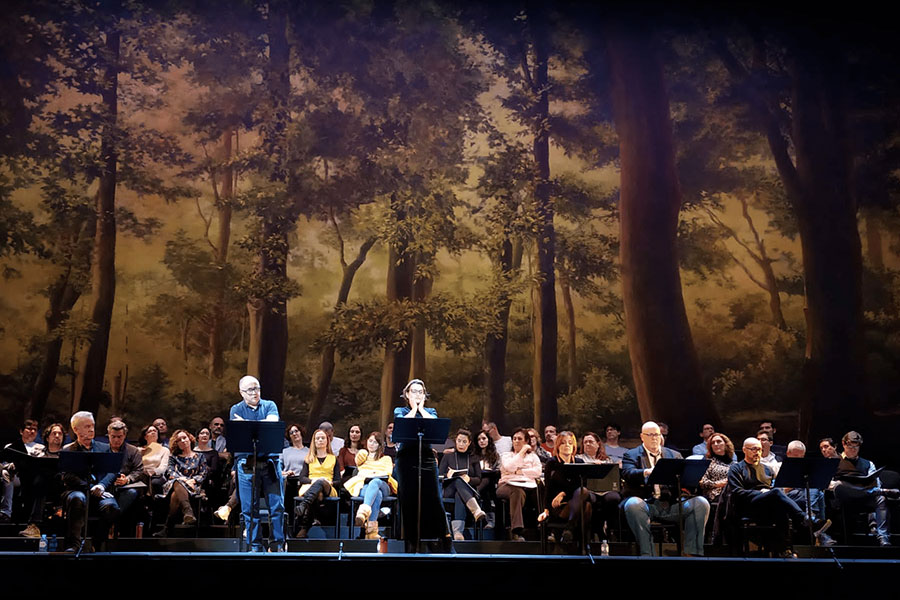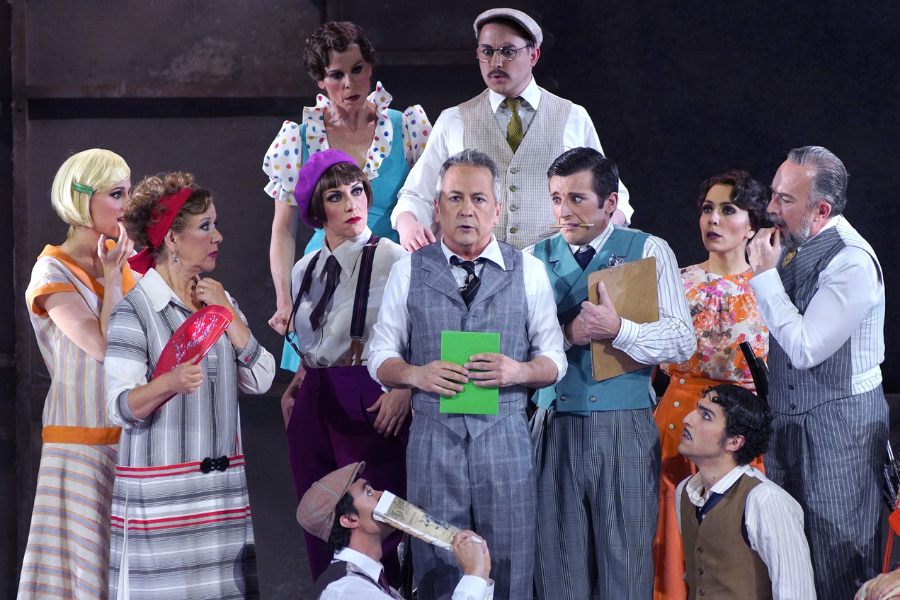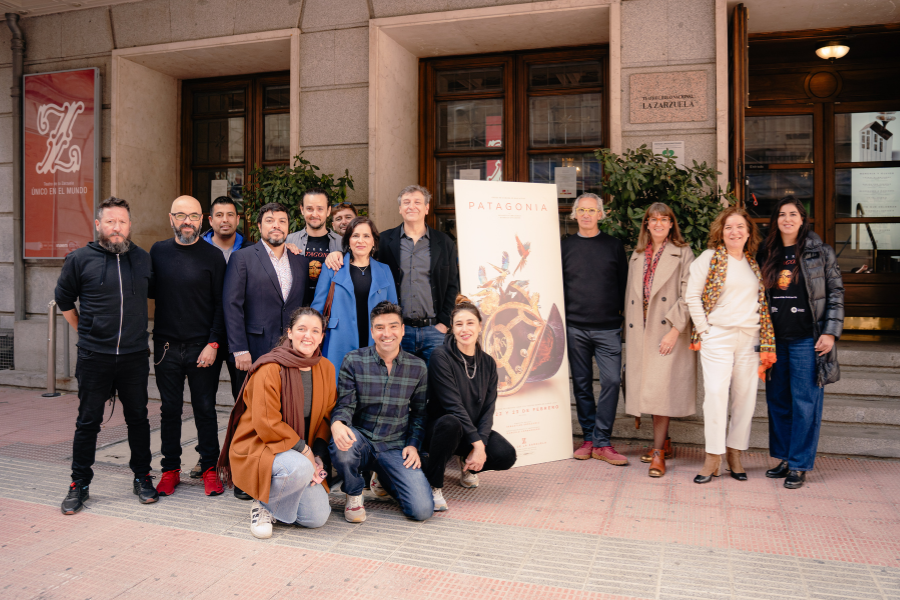El Teatro de la Zarzuela recupera Mirentxu de Jesús Guridi tras más de medio siglo de silencio

Se presenta en versión de concierto con la dirección a cargo de Óliver Díaz al frente de la Orquesta Titular del Teatro (Orquesta de la Comunidad de Madrid), del Coro Titular del Teatro de la Zarzuela, del Coro de Voces Blancas Sinan Kay y de un equilibrado reparto integrado por Ainhoa Arteta, Mikeldi Atxalandabaso, Christopher Robertson, Marifé Nogales y José Manuel Diaz.
Los días 22 y 24 de noviembre pueden considerarse históricos para el Teatro de la Zarzuela. En esas fechas el público podrá escuchar, en versión de concierto, y por primera vez en euskera en este Teatro, una de las obras más desconocidas de Jesús Guridi: el idilio lírico en dos actos Mirentxu. Y será después de 52 años de silencio en este escenario, donde únicamente ha podido escucharse completa en dos ocasiones a lo largo de sus 163 años de historia, la última de ellas en 1967. Una vez más el Teatro de la Zarzuela cumple con una de sus labores esenciales como es la preservación, estudio, recuperación y divulgación del patrimonio lírico. El coliseo, después de iniciar la temporada con El caserío, culmina así su particular homenaje a uno de los más brillantes músicos.
Con libreto de Jesús María de Arozamena y Alfredo Echave, en Mirentxu, según palabras de la experta musicóloga María Nagore Ferrer, “es indiscutible la belleza, que explica la popularidad de algunos números como el Preludio del primer acto o la preciosa y lírica aria final”. Así, Nagore Ferrer destaca que “la maestría compositiva de Guridi está puesta al servicio de un texto poético que es tratado con flexibilidad, sencillez y una paleta orquestal rica y elaborada pero envuelta en tonalidades suaves”.
En la doble cita con Mirentxu en el Teatro de la Zarzuela, el podio será asumido por Óliver Díaz, quien deberá enfrentarse a la maestría orquestadora de Guridi; a su inspiración en la creación de melodías o a la minuciosa arquitectura vocal de la obra. Para encarar todas estas demandas, contará con un equilibrado reparto de voces extraordinariamente adecuadas a las exigencias del compositor.
La soprano Ainhoa Arteta interpretará el papel de Mirentxu, hija de Manu el molinero, y prima de Raimundo, que vive con ellos y de quien está enamorada sin éxito. El papel de Raimundo, enamorado a su vez de Presen, amiga de Mirentxu, lo asumirá el tenor Mikeldi Atxalandabaso. El bajo-barítono Christopher Robertson hará las veces de Txanton, el anciano que cuida de los niños –cuya hermana mayor es Presen– en la casa vecina al molino donde habitan Manu, Mirentxu y Raimundo. El rol de Presen será encarnado por la mezzosoprano Marifé Nogales. Por su parte, el barítono José Manuel Díaz dará vida a Manu. A todos ellos se unirán también como solistas el barítono Mario Villoria, componente del Coro Titular del Teatro de la Zarzuela, y los niños Patricia Valverde y Azahara Bedmar, miembros del Coro de Voces Blancas Sinan Kay.
La historia de Mirentxu en esta ocasión está recreada por el reconocido dramaturgo Borja Ortiz de Gondra y será el actor Carlos Hipólito quien entre los números musicales vaya desdoblando la sucesión de acontecimientos que desembocarán en la tragedia final.
La Orquesta de la Comunidad de Madrid, Titular del Teatro, y el Coro Titular del Teatro de la Zarzuela, completan el cuadro artístico de esta histórica recuperación que contará con un hito más: la grabación y posterior emisión de la obra por parte de Radio Clásica de RTVE. La decisiva importancia de este registro consiste en que hasta la fecha no existen grabaciones válidas de Mirentxu.
Las distintas ‘Mirentxus’
Mirentxu se estrenó en el Teatro de los Campos Elíseos de Bilbao en 1910, y desde esa primera ocasión sufrió constantes modificaciones. Nagore Ferrer habla incluso de “seis o siete Mirentxus distintas”, llegando incluso a convertirse en ópera, añadiendo para ello música a las partes dialogadas. En este formato fue presentada en su estreno de Barcelona en 1913, pero Guridi no quedó en absoluto satisfecho, convencido, a pesar de las críticas favorables, de que el público no comprendió la obra precisamente por tener ese formato de ópera. Por tanto, dos años después, en 1915, la presenta en Madrid, en el Teatro de la Zarzuela, pero en su versión original.
Una nueva adaptación de Mirentxu se estrenó en el Teatro Arriaga de Bilbao en 1934, encargando Guridi la refundición del libreto a sus colaboradores habituales Federico Romero y Guillermo Fernández-Shaw. Para esta nueva versión, el compositor reinstrumentó toda la partitura; modificó algunos números y añadió otros nuevos, intentando no desvirtuar la obra.
En 1947, el compositor pidió al escritor Jesús María de Arozamena una nueva revisión de la obra. Arozamena partió de la versión de 1934, utilizando también elementos del libreto original de Echave, y escribió dos versiones, en castellano y en vasco. Esta última y definitiva Mirentxu fue estrenada por la Compañía Lírica Donostiarra en el Teatro del Gran Kursaal de San Sebastián precisamente el 24 de noviembre de 1947, recibiendo el Premio Nacional de Teatro Ruperto Chapí. Y es esta versión “definitiva” la que se podrá escuchar estos días en el Teatro de la Zarzuela de Madrid.
A pesar de que no se han podido hallar datos documentados de que la obra se presentara como ópera más allá de su estreno de Barcelona, persiste desde siempre la misma pregunta: ¿Es Mirentxu una ópera o una zarzuela? Nagore Ferrer responde: “Como afirma acertadamente Ramón Lazkano en su introducción a la edición crítica publicada por el Instituto Complutense de Ciencias Musicales en 2009, la indefinición de la obra no dejó de plantear problemas a Guridi durante los más de treinta años de gestación de la obra definitiva: se trata de una obra «a medio camino entre un singspiel y una zarzuela éuscara, o de un drama verista y una escena pastoral».”





